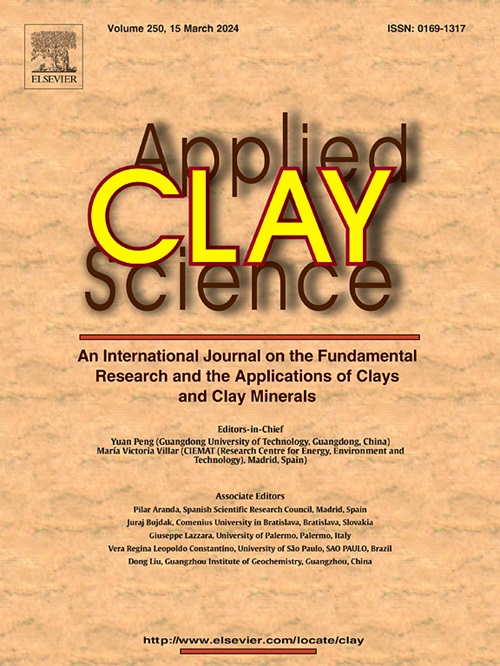Kaolinite to smectite transformation: A crystal chemistry study by analytical electron microscopy
IF 5.3
2区 地球科学
Q2 CHEMISTRY, PHYSICAL
引用次数: 0
Abstract
Kaolinite and smectite coexist in variable proportions along the Tamame de Sayago deposit in Zamora, Spain, suggesting a close genetic relationship. Kaolinite is formed through the weathering of the Variscan granite, while smectite is subsequently derived from kaolinite through a superimposed hydrothermal process that contributes to Si and Mg content. The transformation of smectites into kaolinite has been widely investigated, however, the reverse transformation of kaolinite into smectite is rarely documented. In this study, a group of representative samples from the deposit were studied via analytical electron microscopy and high-resolution transmission electron microscopy to determine the crystal chemistry of particles and explain the genetic relationship between the two clay minerals. The results showed that the crystal chemistry of particles varied, both among the particles of a sample and at different points within single particles. Chemical composition varied progressively from compositions of kaolinite to kaolinite/smectite and ultimately montmorillonite, with most particles displaying intermediate compositions. SiO2 and MgO contents increased progressively from kaolinite to montmorillonite through intermediate compositions. The morphologies and compositions of particles suggest the predominance of a solid-state transformation of kaolinite to smectite via interstratified kaolinite-smectite in areas less affected by hydrothermal fluids. Point analyses revealed the existence of domains with different compositions within single pseudohexagonal particles, suggesting the existence of areas with different degrees of transformation in single particles. In areas closer to faults, through which Si and Mg could circulate, dissolution-crystallisation was likely the main process responsible for smectite neoformation. Occasionally, epitaxial smectite growth was observed along the edges of kaolinite crystals. The simultaneous operation but different intensities of three processes solid-state transformation, epitaxy, and dissolution-precipitation generated particles with a complex crystal chemistry related to the existence of interstratified phases.
求助全文
约1分钟内获得全文
求助全文
来源期刊

Applied Clay Science
地学-矿物学
CiteScore
10.30
自引率
10.70%
发文量
289
审稿时长
39 days
期刊介绍:
Applied Clay Science aims to be an international journal attracting high quality scientific papers on clays and clay minerals, including research papers, reviews, and technical notes. The journal covers typical subjects of Fundamental and Applied Clay Science such as:
• Synthesis and purification
• Structural, crystallographic and mineralogical properties of clays and clay minerals
• Thermal properties of clays and clay minerals
• Physico-chemical properties including i) surface and interface properties; ii) thermodynamic properties; iii) mechanical properties
• Interaction with water, with polar and apolar molecules
• Colloidal properties and rheology
• Adsorption, Intercalation, Ionic exchange
• Genesis and deposits of clay minerals
• Geology and geochemistry of clays
• Modification of clays and clay minerals properties by thermal and physical treatments
• Modification by chemical treatments with organic and inorganic molecules(organoclays, pillared clays)
• Modification by biological microorganisms. etc...
 求助内容:
求助内容: 应助结果提醒方式:
应助结果提醒方式:


